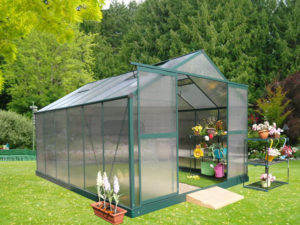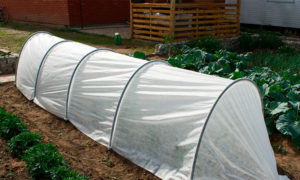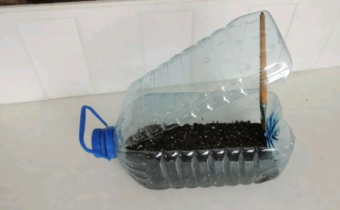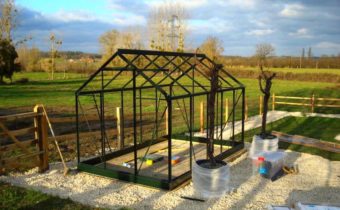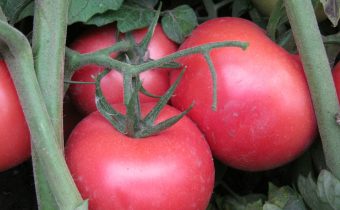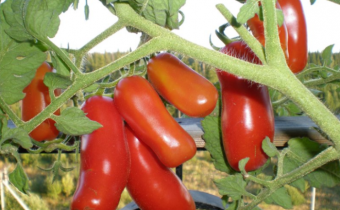Which mini greenhouse is better?
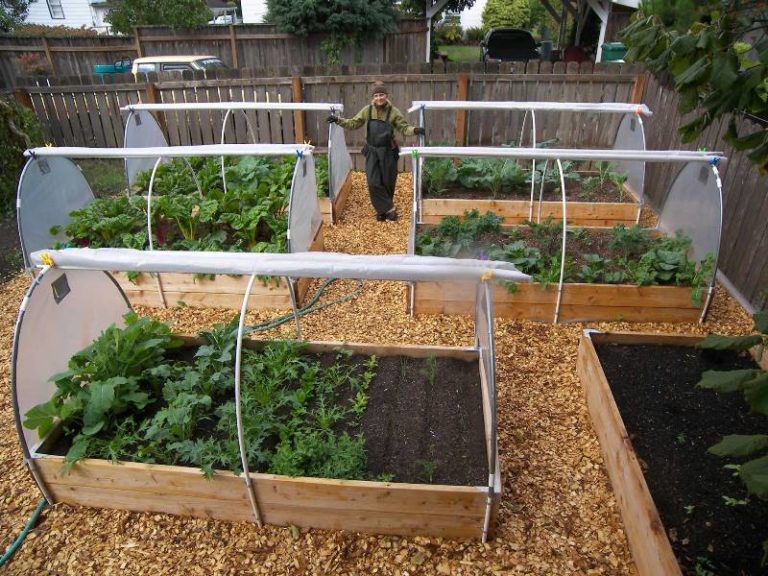
Growing seedlings is not easy. Plants need the right microclimate to grow and develop quickly. That is why gardeners install mini-greenhouses on their plots.
There are different types of such designs. Since the fantasy of craftsmen is limitless, you can make a simple structure on your own. For this we need both savvy and improvised means. If you need to make a strong product for outdoor installation, you may need polycarbonate or agrofibre.
Why do we need a mini-greenhouse
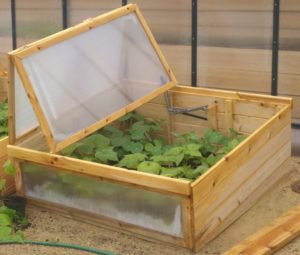 A mini-greenhouse is needed not only for the garden or the dacha, but also in the apartment. It can be planted whimsical and thermophilic plants. Such a structure has several obvious advantages:
A mini-greenhouse is needed not only for the garden or the dacha, but also in the apartment. It can be planted whimsical and thermophilic plants. Such a structure has several obvious advantages:
- protection from wind, draft and rain;
- optimal microclimate;
- seedlings gradually get used to the conditions of the street;
- it is convenient to look after plants;
- easy installation
It often happens that a small area of the site does not allow placing a full-fledged greenhouse on it. In a small area you can install a compact and practical mini-greenhouse. Sooner or later, grown-up seedlings will have to be transplanted into conditions of open ground, but the greenhouse will always become a comfortable home for other plants (greenery, carrots, beets, flowers). They do not need a large space: they feel great in the mini-hothouse.
Compact greenhouse fit on the loggia and even on the windowsill.
Greenhouses and greenhouses - what's the difference?
Answer the question, what is the difference between a greenhouse (stationary) and a greenhouse (seasonal), is possible only after consideration ...
Varieties of mini-greenhouses
There are many varieties of mini-greenhouses. They can have different shapes and sizes.
Mini-greenhouse at home
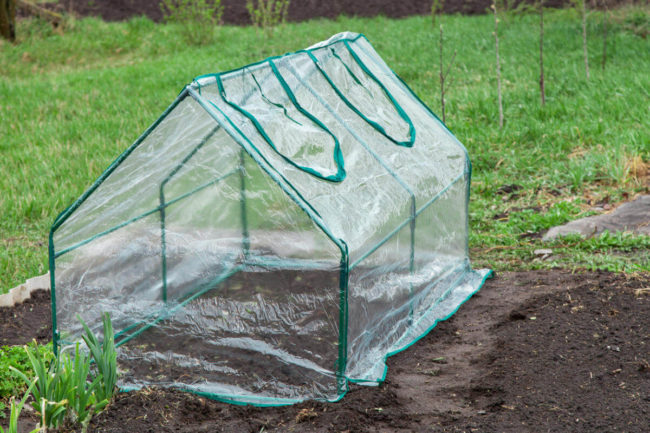 As a rule, it is put on the window sill, and cultures begin to grow in early spring. Some plants are sown in winter. The main purpose of the application is to accelerate the development of plants so that they can be planted in open soil in spring or summer.
As a rule, it is put on the window sill, and cultures begin to grow in early spring. Some plants are sown in winter. The main purpose of the application is to accelerate the development of plants so that they can be planted in open soil in spring or summer.
In appearance, home structures are no different from street ones, except for dimensions. Very popular reduced copies of street models on the arc frame. There are greenhouses, consisting of several tiers or floors. As a simple option, use the usual wooden boxes, covered with a film of polyethylene.
Portable board construction
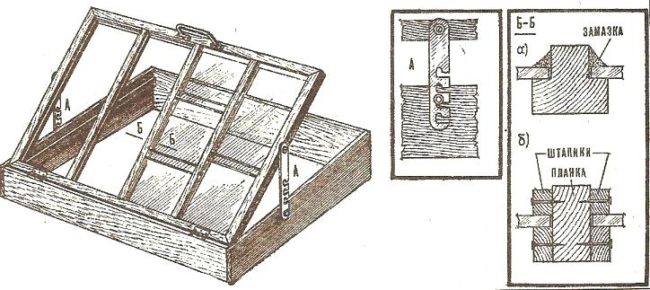 This is a wooden box without a bottom, but with a lid of film or glass. The box can be moved anywhere at any time. It is used when spring frosts threaten the crops planted in the ground. In the street portable greenhouse well rooted vegetables, berries and flowers.
This is a wooden box without a bottom, but with a lid of film or glass. The box can be moved anywhere at any time. It is used when spring frosts threaten the crops planted in the ground. In the street portable greenhouse well rooted vegetables, berries and flowers.
Deep or Belgian greenhouse
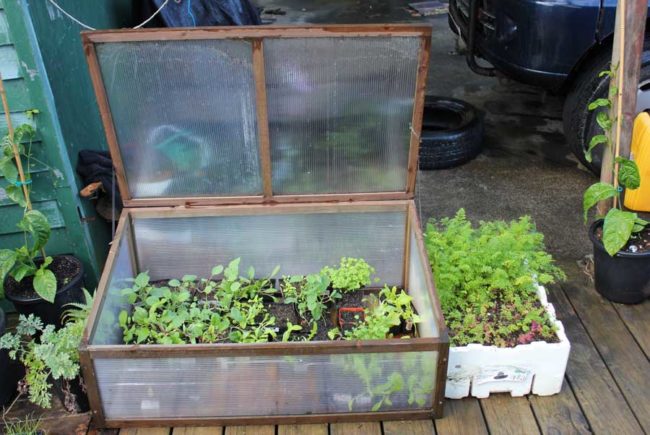 To create a Belgian greenhouse, you will need to dig a trench and reinforce its walls with strapping. In the trench make out the bed with fertile land. The design is covered with a lid. The material for it is a film or polycarbonate.Fertile soil is an ideal heat insulator, but if necessary, you can additionally warm the building with biofuel.
To create a Belgian greenhouse, you will need to dig a trench and reinforce its walls with strapping. In the trench make out the bed with fertile land. The design is covered with a lid. The material for it is a film or polycarbonate.Fertile soil is an ideal heat insulator, but if necessary, you can additionally warm the building with biofuel.
Belgian hotbeds are most often made with lean-to roofs. This saves space on the site.
Mini-greenhouse "Butterfly"
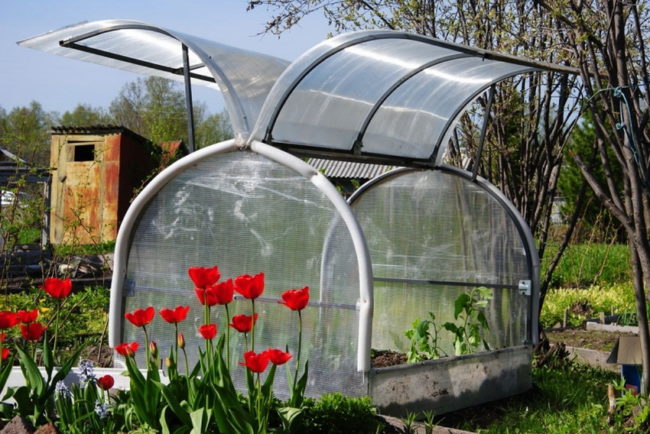 Model "Butterfly" got its name because of the design features of the valves. If they are both fully open, the structure becomes like a butterfly with its wings open. As the greenhouse leaves open on both sides, this provides easy access to the plants at any time. The size of the "Butterfly" can be any, but most of all it is an attractive small-sized structures.
Model "Butterfly" got its name because of the design features of the valves. If they are both fully open, the structure becomes like a butterfly with its wings open. As the greenhouse leaves open on both sides, this provides easy access to the plants at any time. The size of the "Butterfly" can be any, but most of all it is an attractive small-sized structures.
Greenhouse "Snail" or "Breadbox"
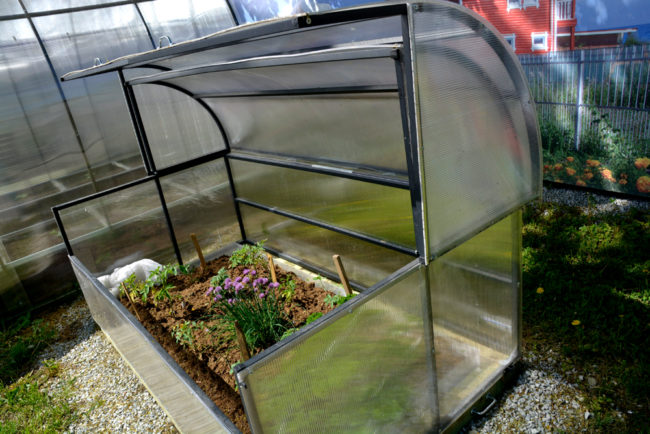 This greenhouse exactly repeats the design of a real breadbasket. Its semicircular shutter fully lift up. At the same time it moves behind the fixed part of the semicircular roof. It is convenient to look after plants, and the construction does not take a lot of place.
This greenhouse exactly repeats the design of a real breadbasket. Its semicircular shutter fully lift up. At the same time it moves behind the fixed part of the semicircular roof. It is convenient to look after plants, and the construction does not take a lot of place.
Balcony greenhouses (shelf)
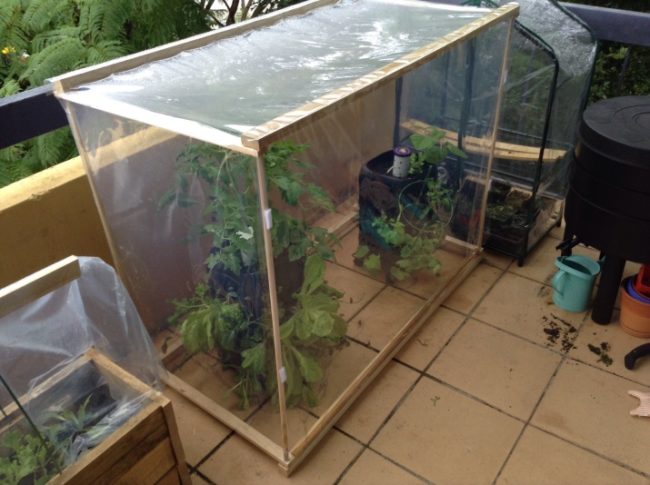 For the manufacture of "shelf" greenhouse using an old cabinet or rack. At the cabinet, they remove the wall from behind, and the resulting void is tightened with polyethylene. Front door is equipped with a door, which often looks like a regular piece of film. The door is fixed with a lath or magnets. Such a greenhouse resembles a shop window. It is transparent, and it allows you to constantly monitor the plants. It can grow greens and vegetables throughout the year.
For the manufacture of "shelf" greenhouse using an old cabinet or rack. At the cabinet, they remove the wall from behind, and the resulting void is tightened with polyethylene. Front door is equipped with a door, which often looks like a regular piece of film. The door is fixed with a lath or magnets. Such a greenhouse resembles a shop window. It is transparent, and it allows you to constantly monitor the plants. It can grow greens and vegetables throughout the year.
Wall mini-greenhouse
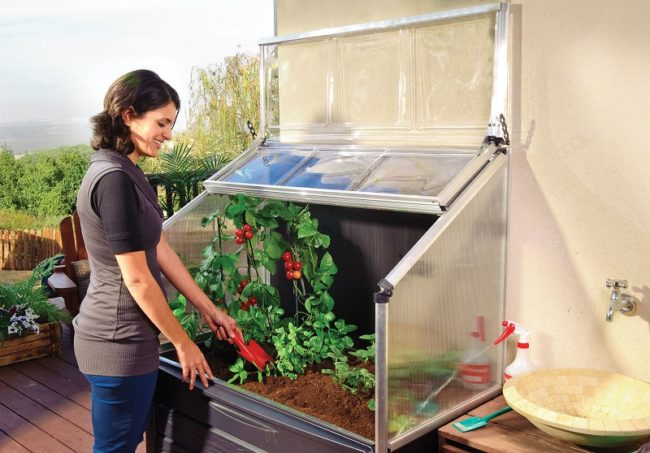 It is always located near the wall of the house or household building. The greenhouse is compact and can be an excellent way out when the summer cottage is quite small, and it is impossible to place even a small “Butterfly” on it. This design has a shed roof. She will have to regularly clean the snow.
It is always located near the wall of the house or household building. The greenhouse is compact and can be an excellent way out when the summer cottage is quite small, and it is impossible to place even a small “Butterfly” on it. This design has a shed roof. She will have to regularly clean the snow.
For the mini-greenhouse wall, you need to choose the southern wall of the house so that the plants get enough heat and light.
Plastic bottle mini greenhouse
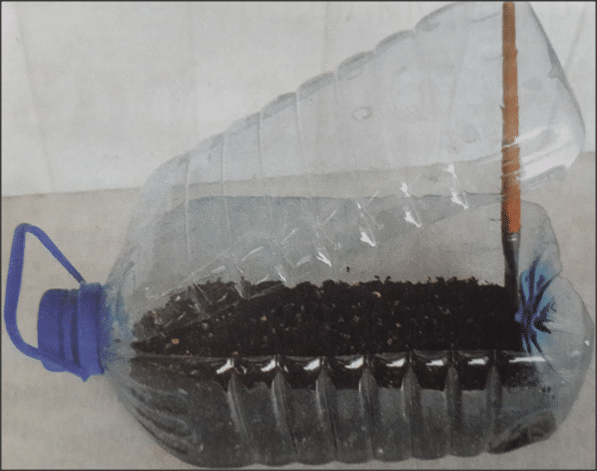 You can make several mini-greenhouses from ordinary bottles, if you do not want to buy wooden boxes and mess with plastic wrap. You will need a bottle of plastic with a capacity of 2 liters. In it cut a rectangular hole. The resulting door is curved, then the bottle is filled with earth and the seeds of plants are planted in a container. The door of the greenhouse must be tightly closed, fixing the tape. As soon as the seeds germinate, you can start airing so that the plants get more oxygen.
You can make several mini-greenhouses from ordinary bottles, if you do not want to buy wooden boxes and mess with plastic wrap. You will need a bottle of plastic with a capacity of 2 liters. In it cut a rectangular hole. The resulting door is curved, then the bottle is filled with earth and the seeds of plants are planted in a container. The door of the greenhouse must be tightly closed, fixing the tape. As soon as the seeds germinate, you can start airing so that the plants get more oxygen.
Mini-greenhouse from an old barrel or can
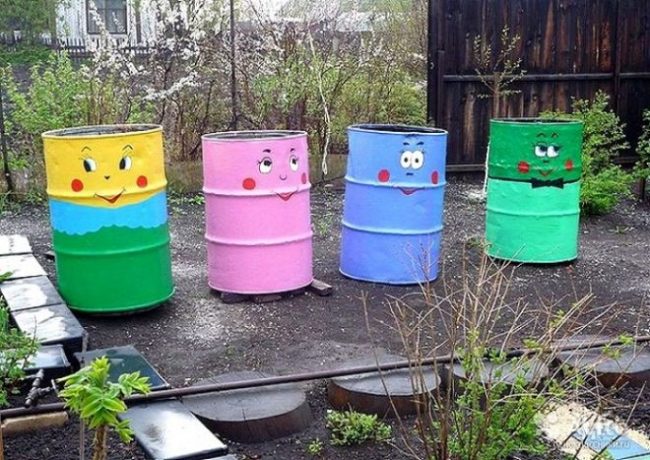 Do not throw out an old can or barrel. Of these, you can make a great greenhouse classic form. To do this, a few holes are cut in the barrel or can. The holes should be made so that it is convenient to care for the seedlings. After the holes are ready, a thick material in the form of a tarpaulin or double polyethylene is attached on top. For fastening will be enough four screws. It is better to use a tarpaulin, because polyethylene will wear out quickly due to the wind.
Do not throw out an old can or barrel. Of these, you can make a great greenhouse classic form. To do this, a few holes are cut in the barrel or can. The holes should be made so that it is convenient to care for the seedlings. After the holes are ready, a thick material in the form of a tarpaulin or double polyethylene is attached on top. For fastening will be enough four screws. It is better to use a tarpaulin, because polyethylene will wear out quickly due to the wind.
Mini-greenhouse window frames
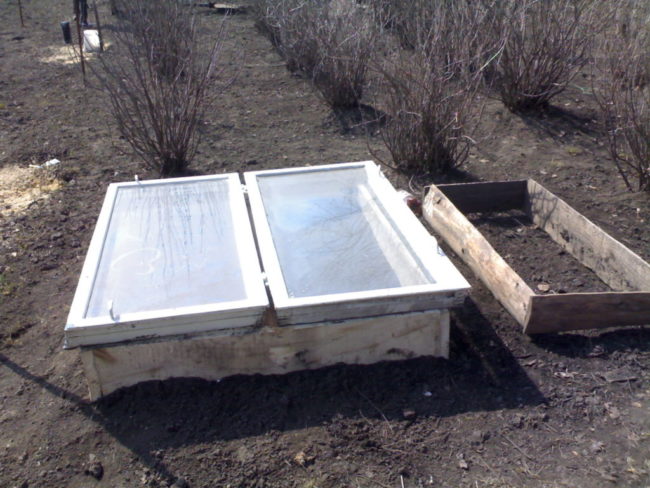 This is a heavy construction, so you need to build a foundation for it. Frames before installation must be carefully prepared. They are cleaned of old paint and covered with stain or linseed oil. For the manufacture of the frame need one rack and two straps - the lower and upper. The floor is better to make concrete, with a layer of waterproofing, and the roof - a gable. Despite some difficulties, the advantage of a product from window frames is that its main elements can be obtained free of charge.
This is a heavy construction, so you need to build a foundation for it. Frames before installation must be carefully prepared. They are cleaned of old paint and covered with stain or linseed oil. For the manufacture of the frame need one rack and two straps - the lower and upper. The floor is better to make concrete, with a layer of waterproofing, and the roof - a gable. Despite some difficulties, the advantage of a product from window frames is that its main elements can be obtained free of charge.
Frames should be chosen the same in size and shape, otherwise it will be difficult to dock them during assembly.
Materials for production
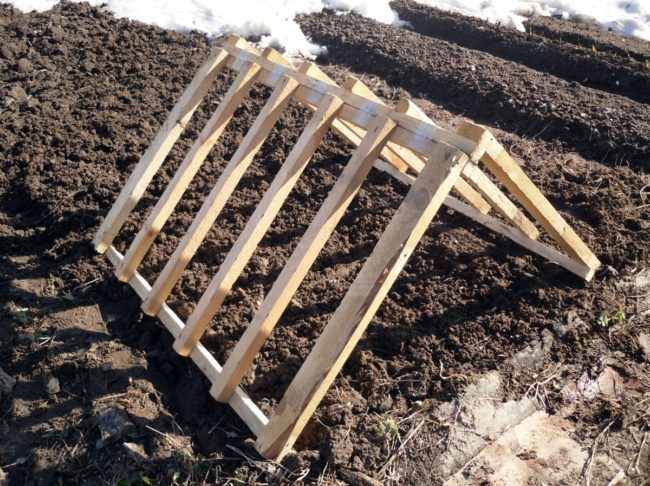 In the construction of a simple mini-greenhouse using such materials:
In the construction of a simple mini-greenhouse using such materials:
- plastic;
- metal profile;
- tree;
- polyethylene film;
- polycarbonate sheets;
- agrofibre;
- glass.
For arched greenhouse need a flexible frame. Arcs of the frame are made of plastic or metal.Among gardeners there are craftsmen who manage to make a semicircular frame made of wood.
The tree looks very beautiful, but it is prone to rotting. Metal or plastic look more prosaic, but they are more practical. Their disadvantages are that the plastic bends, and the metal is subject to corrosion. When using metal, the situation can be corrected: treat it with an anti-corrosion agent and paint it. Unlike metal, plastic is not susceptible to corrosion, but it is more fragile and costs much less. Most often, wood is used to make a box for portable models.
When installing a full-fledged greenhouse with a metal frame, you will need a welding machine. For the frame of the mini-hothouse welding is not needed. Elements of metal bend and stick into the ground.
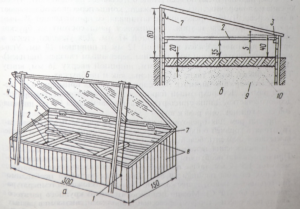 Now you need to understand the materials that are used for plating. Agrofibre is a good material. It transmits light and creates a good microclimate in a greenhouse. Agrofibre is very dense and porous, has the ability to pass moisture, and keep heat inside. The material is easily washed, and if it is stored carefully, it will serve for many years.
Now you need to understand the materials that are used for plating. Agrofibre is a good material. It transmits light and creates a good microclimate in a greenhouse. Agrofibre is very dense and porous, has the ability to pass moisture, and keep heat inside. The material is easily washed, and if it is stored carefully, it will serve for many years.
Often in the gardens you can see greenhouses coated with polyethylene of different thickness. The film is easy to use. It creates a microclimate for plants not worse than other materials, but it cannot be called durable. In bad weather conditions, especially when the wind is strong, it breaks quickly, so it needs to be changed every two to three seasons.
Polycarbonate - a material that many gardeners like. It is light and durable. You can coat them with a small greenhouse and a full-fledged greenhouse. It is a pleasure to work with polycarbonate: it is easy to cut and process. It can be given any desired shape. Products from it look beautiful and neat.
Every self-respecting grower has a greenhouse. Some buy a finished design, others prefer to make their own ...
Glass is a beautiful, but very fragile material. A greenhouse lined with glass will serve for a long time, but since this is a compact design, it is better not to spend so much energy on it, but to make a polycarbonate lining. Working with glass requires experience and skills that not every home craftsman has.
Depending on the type of construction of the mini-greenhouse, experienced gardeners recommend:
- polycarbonate - for facing "butterfly" and "breadbasket";
- agrofibre - for other greenhouses;
- plastic film - for home constructions.
Glass is best used for building a large greenhouse with a plant heating system.
Production of greenhouses of different designs
The easiest option is a greenhouse without a frame. It is necessary to cover the bed with agrofiber or plastic film. To do this, cover the ground with material and fix its edges with stones or bricks. The construction seems primitive, but if you think well of its strengthening, it will be a full-fledged greenhouse - with the microclimate necessary for growing seedlings.
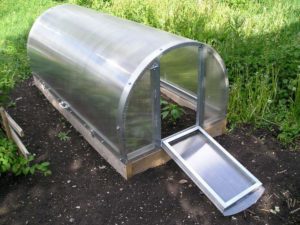 Arched design takes more time. For the manufacture of buildings arch or tunnel type need to perform several steps:
Arched design takes more time. For the manufacture of buildings arch or tunnel type need to perform several steps:
- purchase pipes made of plastic or metal profile;
- make three or four arcs of the same size;
- set them at the same distance from each other (approximately 40 cm);
- when installing, dig the ends of the arcs into the ground to a depth of 30 cm;
- fix the arc at the top point with a wire or wooden rail;
- cover the frame with a film;
- fix the polyethylene on one side (with wire or plastic clips);
- screw the rail on the other side of the film (to roll the polyethylene during the opening of the door).
It remains to close the ends with pieces of polyethylene and fix the design with bricks or stones.
A portable greenhouse made of polycarbonate or glass can also be made independently.To do this, you need a little lumber, a set of screws, several sheds and a handle. The algorithm of actions will look like this:
- make the frame on the type of bevelled box;
- make a wooden frame using thin bars (for the base of the lid);
- insert polycarbonate or glass into the resulting frame;
- attach it to the sheds (on the other side of the box, which will be higher);
- take the bar, make a support for the frame;
- make a hook (for convenience and additional fixation of the cover).
You can make a portable greenhouse completely out of polycarbonate. It will take more time to do this, but the product will be transparent and light.
Options for designs of mini-greenhouses are many. If there is a desire to seriously engage in the cultivation of garden crops, making a greenhouse can turn into an interesting and creative process. You can build a reliable and practical structure. In it, any plants will develop well and feel comfortable.

